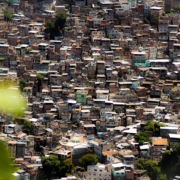‘Don’t be fooled by Juba, Hamish. The real South Sudan lies outside… you’ll see.’
In my first week, virtually everyone I met offered me this advice, and it sparked my interest in life beyond the capital.
Just days later I was in the north of the country, enduring a bone-jarring journey on the recently refurbished inter-state road between Wau and Kwajok, weaving and bouncing around bathtub sized potholes that threatened to swallow our vehicle. Kunal, a colleague from UNDP and South Sudan veteran, took great delight in my various reactions; ‘Enjoy it!’ he kept booming over the rattle; ‘this is one of the best roads in the state!’
Along the way we had passed hundreds of troops from the South Sudan Liberation Army (SPLA), manning checkpoints, hunched under trees and amongst the thatched huts lining the road. Their bedraggled appearance in an assortment of ill-fitting uniforms, often without weapons, did not inspire confidence. I’m told that it’s not uncommon for local communities to be better armed that the military. But in these parts, a uniform and a semblance of authority substitutes for a livelihood.
We arrived in Kwajok, the docile, sprawling capital of Warrap state. A look beyond the dusty air of calm revealed vast challenges for security, governance and development. Basic sanitation and services appear not to exist, living conditions for recently returned Southerners are bleak, newly installed power-lines lie broken and V8 landcruisers and air-conditioned offices were the only evidence of government. A second glance at the shops in the teeming market reveals a near monopoly by Ugandan, Ethiopian and Kenyan businessmen. There appears to be a vast population of unemployed youth, with ready access to weapons, facing few prospects and rising costs of marriage. A volatile mix in a state wracked by ethic division and violent incursions by rebel groups.
Serious as these challenges are, it is worth putting things into perspective. After all, as I had only recently learned, this region has been wracked with war for all but ten years since Sudan’s independence from Britain and Egypt in 1956. The question I found myself asking in Kwajok was what is the impact of decades of conflict, marginalisation, displacement and devastation upon this new country?
For a start, the need to address insecurity is all-encompassing. Entrenched poverty, deeply embedded ethnic and tribal tensions, weak and corrupt governance, scarce water and grazing land, a military which acts with impunity; there are many reasons for conflict to remain pervasive, despite the war ending with the north.
Then there is the question of state-building. How do you create a nation in this context? Where much of the population felt more secure during the war? According to a recent Danish assessment, the process ‘is virtually starting from zero, in a backdrop of serious demographic, ethnic, rural-urban and centre-periphery fault lines.’ And do not overlook the fact that, most, if not all, civil servants earned their jobs as bush-fighters in the war.
Finally, the socio-economic impacts have been simply devastating. South Sudan faces some of the worst indicators in the world; more than 90% of the population live on less than a dollar a day, 97% of people have no access to sanitation, 92% of women cannot read or write, 1 in 7 pregnant women will die of complications, 1.5 million people are food insecure… the list goes on. And it is staggering.
The enormity of these challenges began to sink in on the return flight to Juba, as the vast country below, cut off by seasonal rains for half the year, merged in the distance with the hazy blue horizon. At this point the significance of recent events struck me; relatively orderly national elections in 2010, a peaceful referendum early this year, followed by a surprisingly calm transition to independence in July.
Remarkable.
It made me wonder if, in spite of massive obstacles to peace, nationhood and development, this place might just have a chance. It might be a faint glimmer of hope at present, perched atop a fragile foundation, but it is a glimmer nonetheless.



